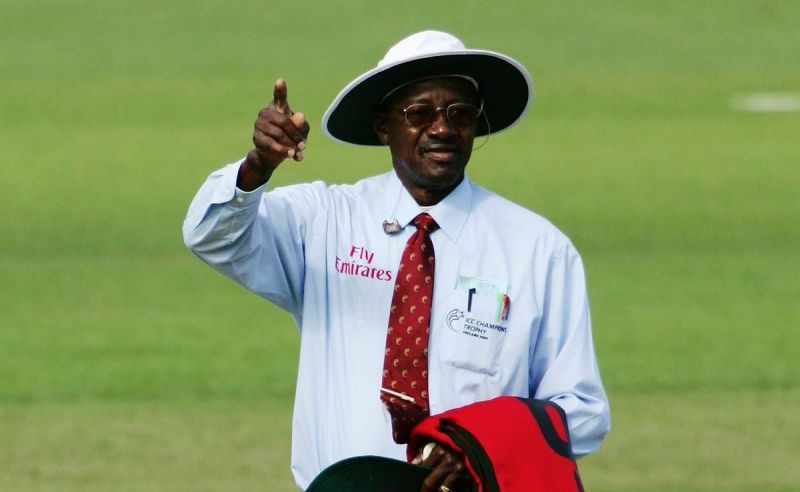
10 most controversial umpiring decisions in cricket history
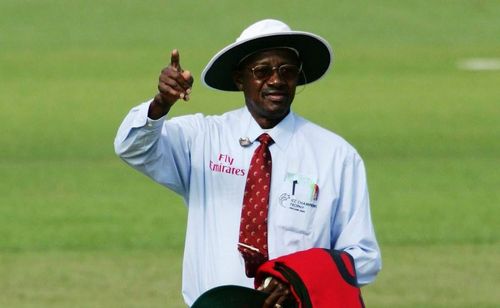
One of the primary duties of an umpire in cricket is to ensure that the game is played in a fair and sporting manner.
It is not an easy task to become a cricket umpire. A prospect needs to go through a rigorous combination of theory, practical and viva exams before becoming eligible to officiate in a match. Umpires usually start from the domestic/state level before moving up the ladder to adjudicate in international games.
Despite the stringent selection process in place, umpires at times make controversial decisions that have repercussions on the outcome of a game. It's true that at the end of the day, umpires are humans, and humans can make mistakes. But what if those mistakes happen in a game or series where the stakes are high?
In this respect, let us have a look at ten of the most controversial umpiring decisions in the history of cricket.
10. Muttiah Muralitharan called for chucking (1999)
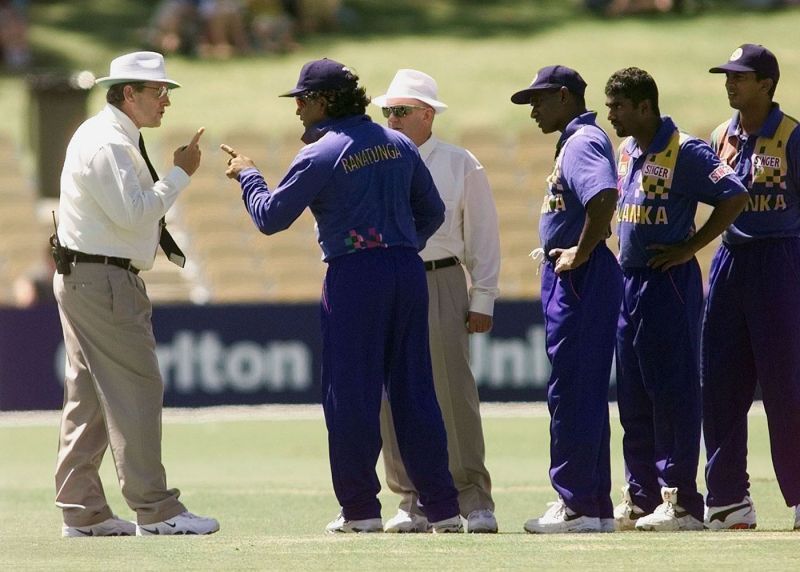
There is a relatively low probability of anyone remembering the Charlton and United Tri-Series in 1998/99 series played between England, Sri Lanka and Australia. In the eighth game of the said series between England and Sri Lanka, there was an incident involving the umpire.
In the 16th over of the said game, Muttiah Muralitharan was introduced into the attack. After bowling the fourth ball of the 18th over, umpire Ross Emerson, who was standing at square-leg, decided to call a no-ball on the young off-spinner for 'throwing the ball'. Muralitharan had been previously called for chucking, and after a lot of adjustments, was cleared by the ICC to continue with his bowling action.
On the day, neither umpire Tony McQuillanat the bowler's end had any complaints, and nor did the batsmen. The Sri-Lankan captain Arjuna Ranatunga, though, was going to have none of it. After a prolonged talk with the umpires, he ordered his team to leave the field and also apologised to the English batsmen. The match referee and team manager had to be involved in bringing the Lankans back on to the ground.
All that was gained from the incident was a moment of infamy for umpire Ross Emerson who seemed to have a problem with Murali's bowling action. Incidentally, it was quite bizarre for Emerson to have 'seen' the throwing motion of the bowler's arm while standing at square leg.
9. Geoff Lawson twice given not out for hit-wicket (1984)
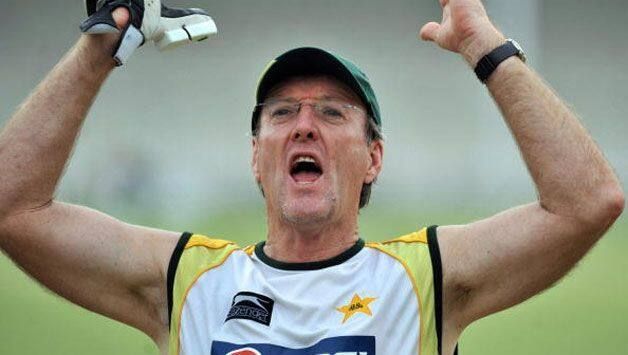
In the second Test between Australia and West Indies at the Gabba in Brisbane in 1984, a strange event occurred twice. The only people on the field who did not notice the same were the two umpires, RA French and MW Johnson.
Geoff Lawson, while attempting a leg glance, promptly knocked the bails down due to his heels touching the stumps. All that the umpire did was walk up to the stumps and put the bails back on!
In the very next over, Lawson faced Michael Holding, and the bails were knocked down by the batsman again. The two umpires had changed ends. Holding pointed to the square leg umpire, questioning how the batsman was still at the crease when the bails were on the pitch.
Once again, the result was the same. The umpire walked up to the stumps and put the bails back on. The thought of a hit-wicket did not even minutely occur to either of the umpires.
Eventually, the incident did not have an impact on the outcome of the game. West Indies won on the day, but the umpire's decision of not calling the batsman out in both instances was strange, to say the least.
8. Darrell Hair and Billy Doctrove award the game to England via forfeit (2006)
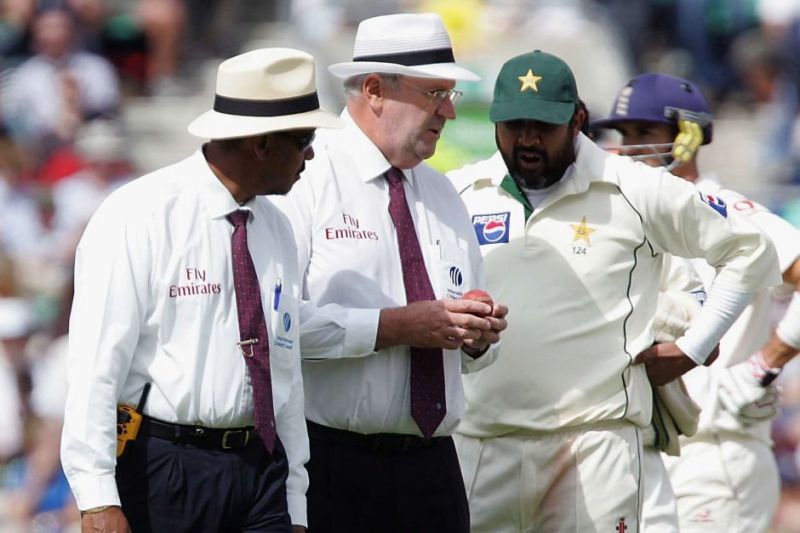
In 2006, Pakistan were on a tour of England for four tests, five ODIs and a single T20I. In the fourth and final test, a highly controversial incident occurred. The series had already been wrapped up by England who led 2-0 going into the last Test.
An hour before tea on Day 4, umpire Darrell Hair (the same person who called Muralitharan for chucking back in 1995) and Billy Doctrove asked for a change of the ball. Usually, the bowling side is consulted while changing the balls. But it was not so on the day.
The umpires, instead, decided to ask the batsman. Their reasoning for doing so was because they believed the Pakistani players illegitimately altered the condition of the ball. However, there was no evidence to support their claim, despite all the cameras at the Oval. Furthermore, the visitors were slapped a five-run penalty.
The Pakistani players, upset at the apparent injustice meted out to them, did not walk out to take the field after tea. The umpires went to the Pakistani dressing room for a conversation with the players, Then they returned to the pitch, took the stumps off and awarded England the game on forfeit.
Pakistan did come out to the field after an hour, but the umpires had made their decision by then and refused to overturn it. Later, the ICC overturned the decision from an England win to a draw. But the MCC World Cricket committee comprising Anil Kumble, Rahul Dravid, Michael Atherton and Shaun Pollock did not acknowledge the same.
This is because the rules of the game state that an umpiring decision, right or wrong, cannot be changed at a later date. Thus the scorecard of the Test still reads: "England won the game as opposition refused to play".
One can acknowledge that not coming out to play is reason enough for the umpires to deem a game as 'forfeited by the opposition'. But on the day the team in question returned to the field of play despite being slapped with a charge that had little supporting evidence.
Thus it was highly inflexible officiating from the umpires not to have let play continue. Umpire Darrell Hair was subsequently banned from further officiating by ICC for 'guessing' a ball-tampering.
7. Sachin Tendulkar's 'shoulder before wicket' dismissal (1999)
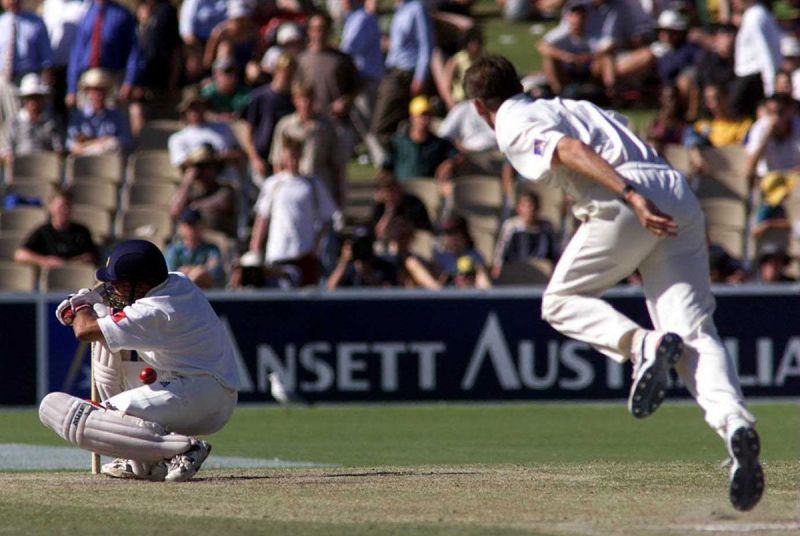
In India's tour of Australia in 1999, umpire Daryl Harper made a controversial call in the Indian second innings. Chasing 387 runs for a win, India had lost three wickets in quick time, with Rahul Dravid and VVS Laxman being among the ones back in the pavilion.
After Shane Warne dismissed Dravid, Sachin Tendulkar walked out to the middle. The said incident occurred in the third ball of the next over bowled by Glenn McGrath.
The slips and gully were in place for Tendulkar as McGrath banged the ball short. Tendulkar saw the short ball and ducked. But the ball after pitching, surprisingly, stayed low and hit the shoulder of the batsman. The Australians appealed for an LBW, and umpire Daryl Harper gave Tendulkar out.
Going by the rule book, LBW applies to any part of a batsman's body, except the glove, impeding the path of the ball. The Tendulkar decision, though, generated a lot of controversy. It not only involved India's best batsman on that tour, but it was debatable whether the ball would have gone on to hit the stumps. Subsequent replays seemed to suggest that the ball would have missed the stumps, but the call stood.
6. Sachin Tendulkar given run-out after Shoaib Akhtar collides with him (1999)
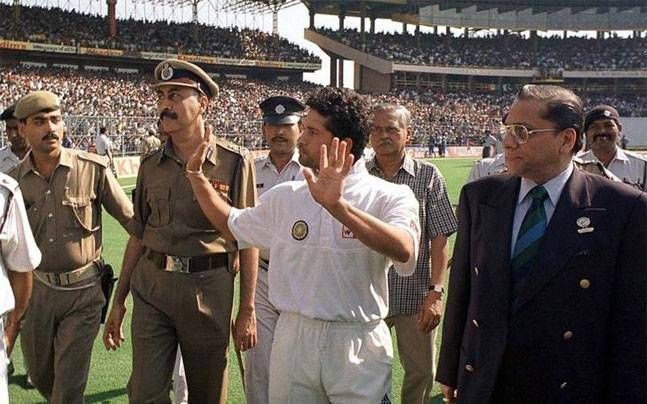
In the first Test between India and Pakistan at the Eden Gardens in Kolkata in 1999, there was a controversial umpiring decision.
It was the fourth day of the game, with India attempting to chase 279 runs for victory, when the said incident occurred.
Forty-three overs into their innings, the hosts, were seemingly in control at 143-2, as Wasim Akram bowled to Sachin Tendulkar. Tendulkar flicked the bowler to deep mid-wicket and completed two runs before returning for a very comfortable third.
The substitute fielder Nadeem Khan picked the ball up and threw it at the stumps. Just before Tendulkar reached his crease, out of nowhere, Shoaib Akhtar appeared on the frame and collided with the batsman who was a foot away from the crease.
The momentary halt was enough for the ball to crash the stumps, with Tendulkar short of his crease. The batsman was given run out, but the Kolkata crowd went mad. Tendulkar himself had to come out and take a full circle of the ground to pacify the spectators before play could resume.
India lost the game by 46 runs. Had Tendulkar remained at the crease for a while longer, there was a fair possibility that the game could have gone the way of the hosts.
5. The umpiring calls in the Sydney Test (2008)
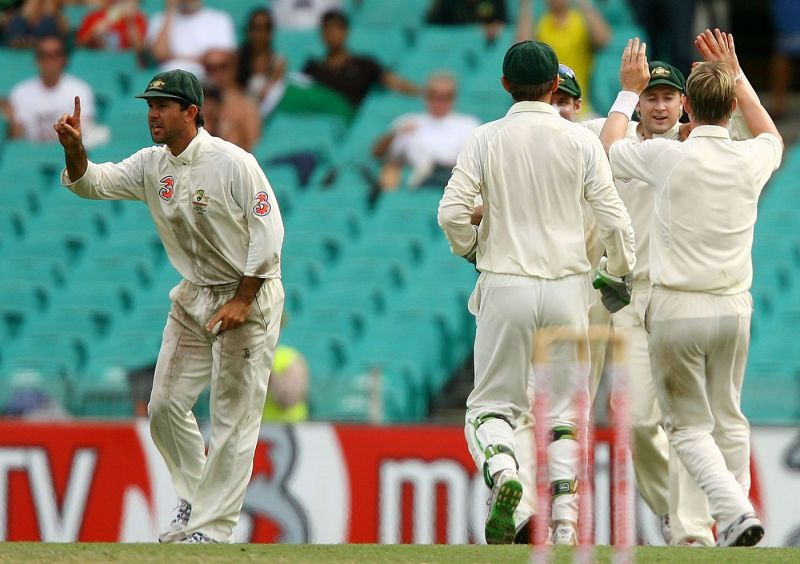
India's tour down-under in Australia in 2008 grabbed a lot of public attention. In the second Test in Sydney, there was the infamous monkey gate scandal involving Harbhajan Singh and Andrew Symonds, which was a different saga altogether. However, the Test witnessed several controversial umpiring calls, most of which went against the visitors.
The eventual Man of the Match, Andrew Symonds, could have been out on three separate occasions. An edge off Ishant Sharma's bowling was heard by everyone except by the man who mattered most - umpire Steve Bucknor.
Bucknor did not even refer a stumping appeal by MS Dhoni to the third umpire, and it looked like it was clearly out on seeing replays. On another stumping appeal on Symonds, the TV umpire gave the wrong decision of 'not out' when Symonds' foot was in the air.
There were other similar umpiring howlers in that game. Australian captain Ricky Ponting had nicked a ball down the leg side, but India's appeal for caught behind was turned down by umpire Mark Benson.
In the Indian innings, Mark Benson gave Wasim Jaffer out on a no-ball by Brett Lee. Steve Bucknor then gave Dravid out caught when the batsman's bat was firmly behind the pads.
Another one involved Mark Benson asking Ponting if Saurav Ganguly's catch had carried to Michael Clarke in the slips. Replays suggested it hadn't, but Benson had no qualms to rule the batsman out on the word of the opposition captain.
The plethora of umpiring mistakes, most of which went against them, enraged the Indians who ended up losing the Test.
4. Stuart Broad given not-out after an edge (2013 Ashes Series)
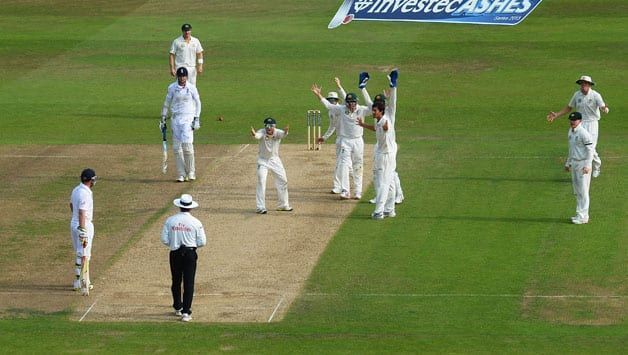
This particular decision went against Australia in the first Test of the 2013 Ashes series.
Stuart Broad was batting on 37, with England leading by 232 runs, when Ashton Agar came on to bowl the 117th over of the innings. In the last ball of the over, the batsman edged one to the slips. But the umpire failed to see what everyone else had.
Broad went on to add another 28 runs to his total. Australia ended up losing the Test to England by just 14 runs. The visitors had every right to be disgusted at the decision. It could be said that the wrong umpiring decision eventually cost them the game.
3. Ben Stokes not given LBW (2019 Ashes Series)
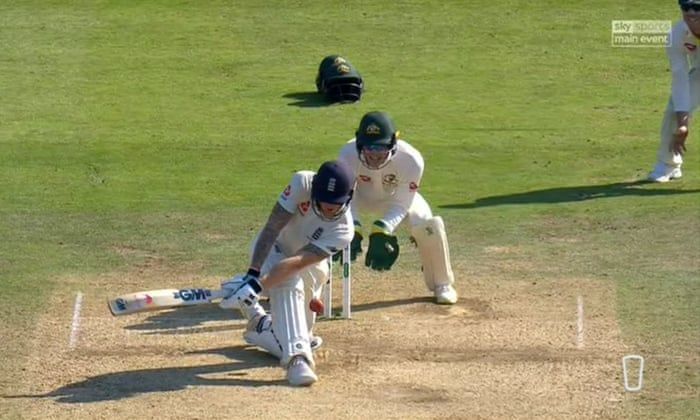
The third Ashes Test of 2019 saw one of the best Test matches in the history of cricket. A magnificent unbeaten innings of 135 from Ben Stokes saw England chase down 359 runs to complete a splendid run chase. However, there was a twist.
Nathan Lyon bowled an eventful over when England needed just two runs to win. First, Lyon fluffed a regulation run-out chance at the non-striker's end. Later in the same over, Stokes attempted an ill-advised sweep shot, and missed the ball.
The batsman was plumb in front and England would have lost the Test by a single run despite the heroic last-wicket stand between Stokes and James Anderson. But umpire Joel Wilson did not budge.
Australia, who had run out of reviews, could do nothing to overturn the decision. Few balls later, Stokes hit the winning runs. It was a highly commendable run chase, but it may not have happened had the umpire ruled Stokes out in 'that' Lyon over or Australia had a review left.
2. MS Dhoni's stumping of Ian Bell (2013 Champions Trophy Final)
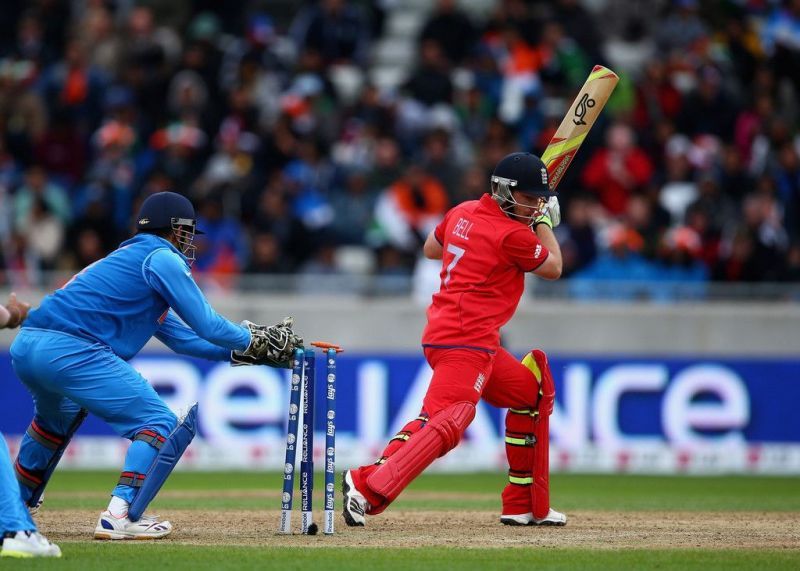
A decision in the final of a tournament carries high stakes. In the 2013 Champions Trophy title match between India and England, the tourists managed a modest 129/7 in a rain-affected game.
India were not going to cave in easily, though. Alastair Cook, Jonathan Trott and Joe Root were all back in the hut when Jadeja came into bowl with England at 41/3. The third ball of the over was beautifully reverse swept by Ian Bell for a boundary.
On the next ball, Bell gave himself room for an inside-out shot, and Jadeja smartly followed the batsman. Bell missed the ball completely, and MS Dhoni had the bails removed in a flash. Kumar Dharmasena signalled for the third umpire. Bell was a foot down the crease but had swiftly dragged it back. Dhoni's glovework was lightning quick, though. In one frame, the batsman's foot was in the air, in the next it was grounded.
It was not exactly a controversial call but a tough one, nonetheless, for the third umpire. The decision, which could have gone either way, eventually went the way of the fielding side and Bell was adjudged out.
However, the incident did not seem to rock England hard because they recovered, before a late surge from India. The stumping can be viewed at the 4:10 mark in the following video.
1. Kumar Dharmasena awards England six runs for overthrows (2019 World Cup Final)
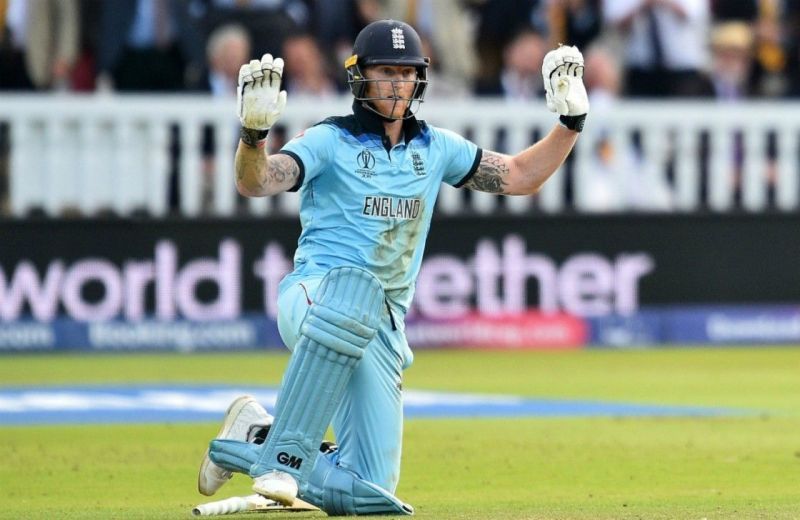
What a final it was! New Zealand and England went toe to toe at Lord's. The struggle for supremacy was a spectacle to witness. In the last over bowled by Trent Boult to Ben Stokes, England required 15 runs to win.
The bowler started brilliantly with two dot balls, but Stokes sent the third ball soaring out the park for six. The equation petered down to 9 off 3. That was when things went horribly wrong for New Zealand.
Stokes swung but could not make a good connection as the ball went to the leg side. The batsman ran the first one hard and went for the second as if his life depended on it. Martin Guptill, one of the best fielders in the New Zealand team, aimed a throw at the stumps.
As Stokes scampered back for the second, his desperate lunge forward with the bat deflected the ball which went away for four. Umpire Kumar Dharmasena signalled six runs for England - 2 for the runs run by the batsman and 4 for the overthrow.
The equation which could have been seven off 2 was now three off 2. Stokes managed two runs off the last two balls, thereby tying the game. England won the final in the Super Over on the maximum-boundary rule.
Umpire Simon Taufel, a very respectable figure, pointed out that Dharmasena's decision was wrong. This controversial umpiring decision may just have cost New Zealand the World Cup.
According to law 19.8: Overthrow or wilful act of a fielder
"If the boundary results from an overthrow or the willful act of a fielder, the runs scored shall be any runs for penalties awarded to either side and the allowance for the boundary and the runs completed by the batsmen, together with the run in progress if they had already crossed at the instant of the throw or act."
The second run could have been awarded only if the two batsmen had crossed at the instant of the throw. It was a decision that eventually cost New Zealand the World Cup. But one cannot fault Dharmasena for assuming that the batsman had crossed when he signalled four overthrows, and six runs, to the England total.